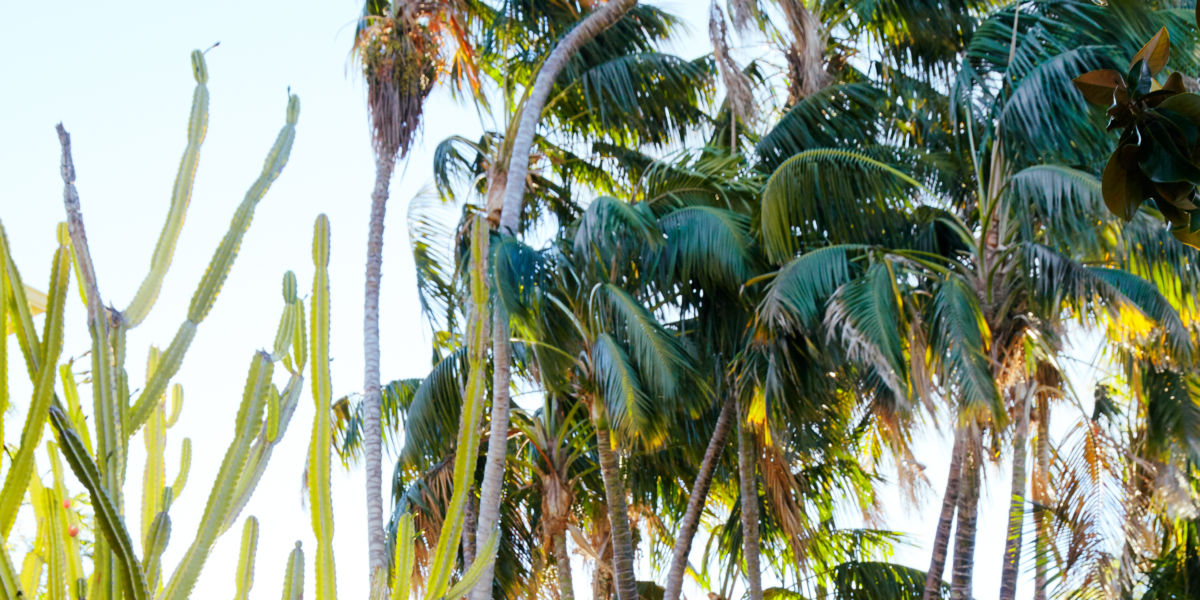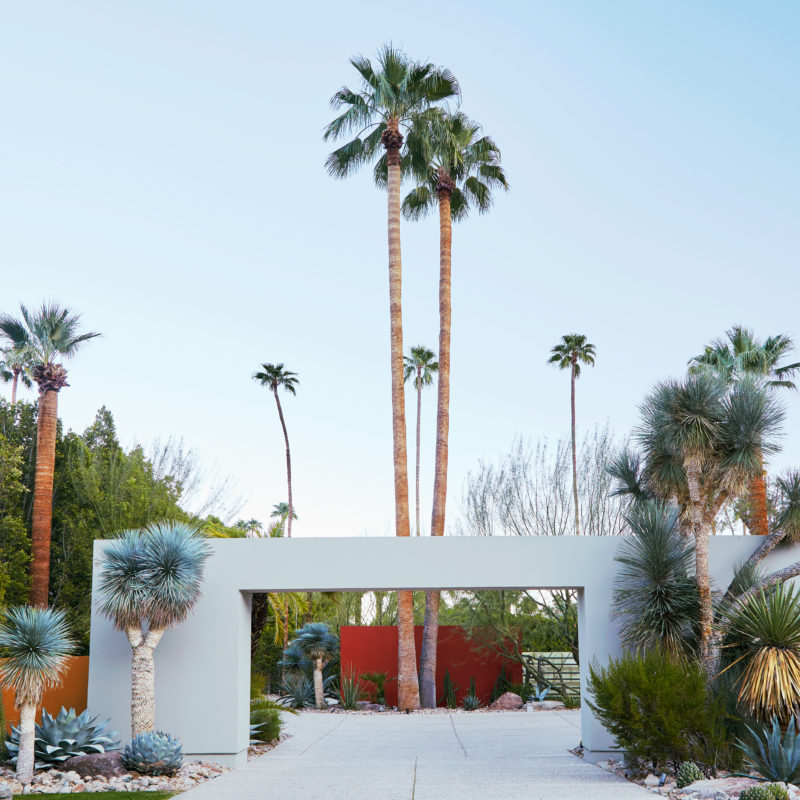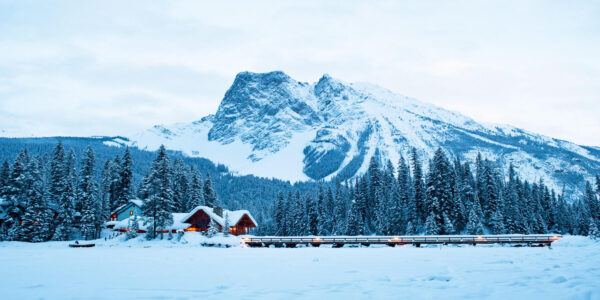
How the Palm Tree Became a Western Icon
Why the palm tree varieties that grow in the West are so iconic—and also ready for a makeover

Caitlin Atkinson
As gray winter skies approach, daydreams have a way of turning to the topics—perhaps an island getaway where a hammock awaits beneath a soaring coconut tree. Rustling fronds, a creaking truck, and just the right amount of shade invite a nap.
Yet there’s more to the palm than its starring role in vacation fantasies. Indigenous tribes used the West’s only native species, the California fan palm (Washingtonia filifera), as a resource for food, shelter, and tools. In-the-know desert travelers also recognized that spotting W. filifera usually meant that you had found water—they often grow near creeks and springs.
But with roughly 2,400 palm species found worldwide, it was only a matter of time before W. filifera was joined by near and distant relatives—especially as the climbers were wielded to draw people westward. In the 18th century, Franciscan missionaries brought Canary Island date palms (Phoenix canariensis) to California for their biblical associations. A century later, the Southern Pacific Railroad used them to pitch semi-arid Los Angeles as a lush paradise for would-be vacationers and real estate investors. The film industry followed suit, too, starting in the early 1900s, lining their studios with palms as a way to represent exotic and faraway lands. Stars like Rudolph Valentino were photographed beneath them, thus ushering in a period where these dramatic, handsome trees became synonymous with glitz and glamour.
Perhaps most ambitious of all, in 1931 the City of Los Angeles planted an astonishing 25,000 Mexican fan palms (Washingtonia robusta) along 150 miles of boulevards. The goal was to put unemployed Depression-era men back to work and to beautify the city before the 1932 Summer Olympics. Today, some of those same skydusters tower 100 feet overhead and have become a signature feature of L.A.’s beaches and streets, emblazoned on T-shirts and postcards.
Brandishing a living thing as a sort of coat of arms, however, has its limits. Those boulevard W. robusta are today withering and reaching the end of their lifespan. Meanwhile, the missionaries’ popular P. canariensis are struggling in their adopted home—the variety is susceptible to fusarium wilt (an incurable soil-borne fungus often spread by not properly sterilizing pruning tools) and to the appetites of the South American palm weevil that’s marching a destructive northbound path (see “Pest Control” at right).

Caitlin Atkinson; Landscape Design by Steve Martino
In response, cities and homeowners are replanting or replacing palms that have seen better days with an eye toward more sustainable varieties. There are at least 500 species that will grow happily along the West Coast, says horticulturalist Jason Dewees of San Francisco’s Flora Grubb Gardens and author of the recently published Designing with Palms (Timber Press; $50). Some are even better suited for the region than the fronds you typically see. “It’s time to look at palms with fresh eyes,” he says. “We can release them from the prison of iconography.” For example, Dewees points to the Guadalupe palm (Brahea edulis)—hardy, handsome, and ideal for drought-prone coastal California. It can handle everything from salt air to SoCal’s heat to San Francisco’s foggy summers and chilly nights. A clump-forming Mediterranean fan palm (Chamaerops humilis) would do well in any garden dotted with low-water lavender, olive trees, and rosemary. Another, the date palm (Phoenix dactylifera), loves the blaze of Southwest deserts as it harkens back to its roots in North Africa, while Trachycarpus thrives in the cool summers and wet winters of the Northwest.
Not every palm will tower far above. Their heights are as varied as the species themselves, making the possibilities for home gardeners vast. “They can be tiny understory plants, bamboo-like clusters, or no bigger than a shrub,” says Dewees. “Their uses become much more diverse when you pay attention to the forms they can take.” For example, a slow-growing Chinese fan palm (Livistona chinensis) creates stunning eye-level foliage in cooler climes; in the temperate San Francisco Bay Area, it adds just a few inches of height per year. For something that won’t reach a lofty 80 to 100 feet, modest varieties like the 25- to 60-foot king palm (Archontophoenix cunninghamiana) and the 35-foot Norfolk Island palm (Rhopalostylis baueri) are more to scale with the average home. Or better yet, look to the thin-trunked, 10-foot baby queen palm (Chamaedorea plumosa) or any number of the steadily ascending blue-leaved species. With touches of silver in its foliage, the Mexican blue palm (Brahea armata) looks quite handsome in a pot—the container will restrict its height and keep it manageable.
Either way, you won’t have to close your eyes to imagine that tropical getaway come winter. The visual cues may be growing just beyond your doorstep.
